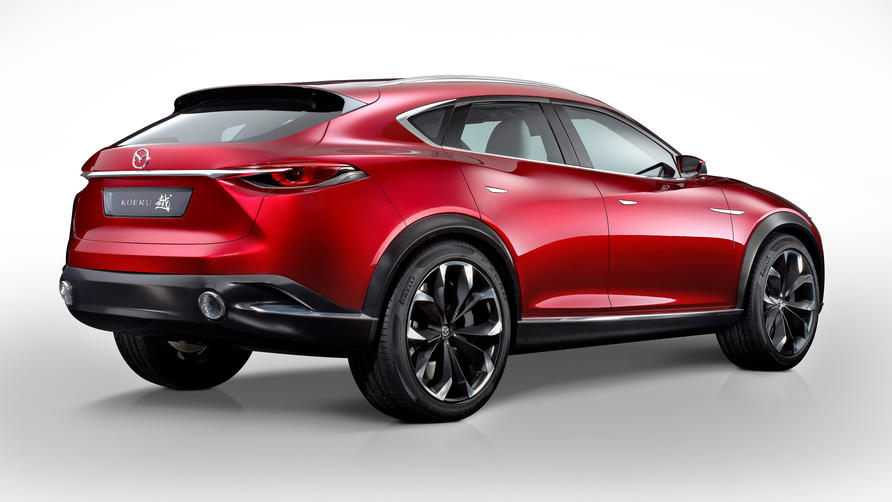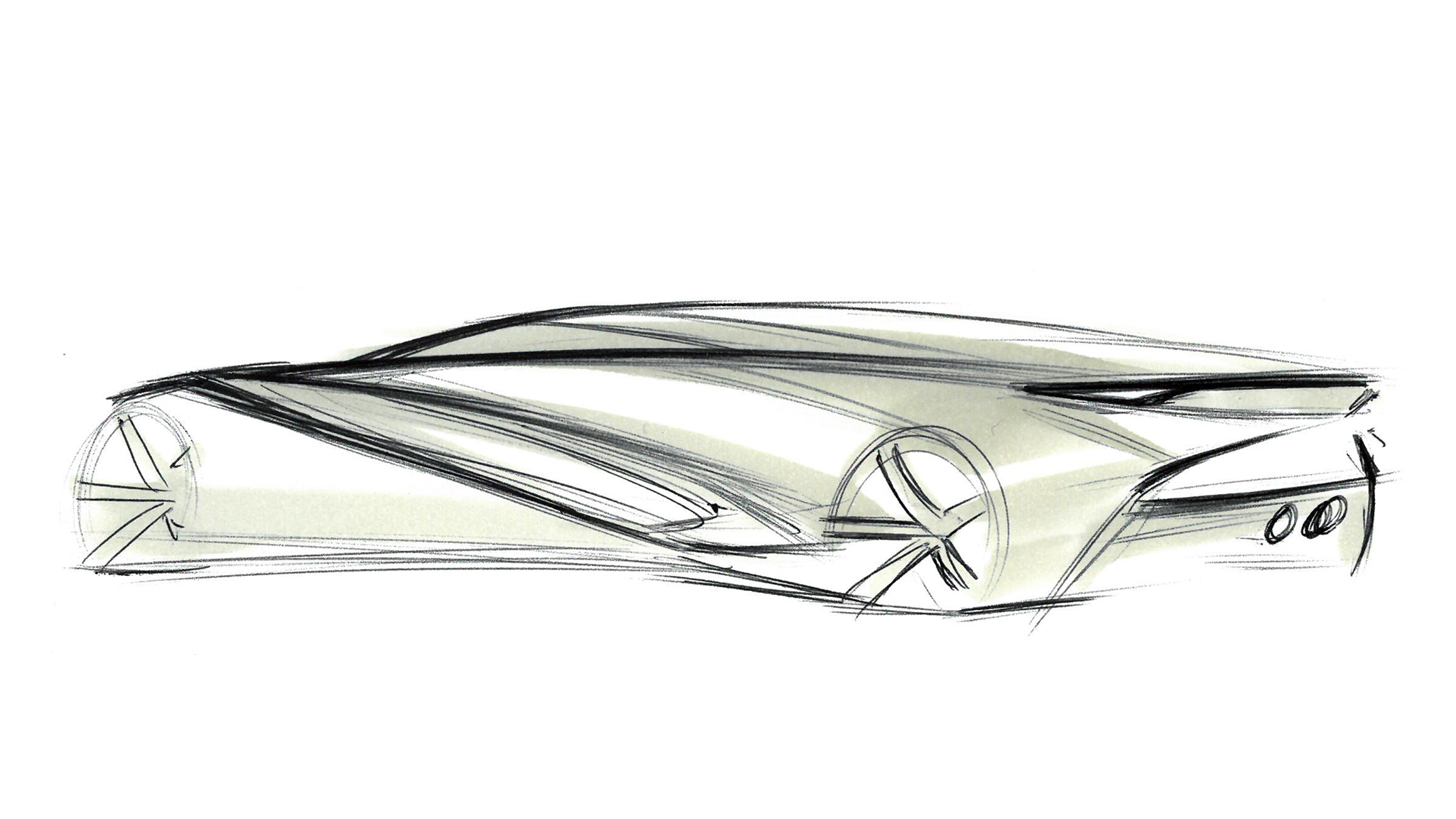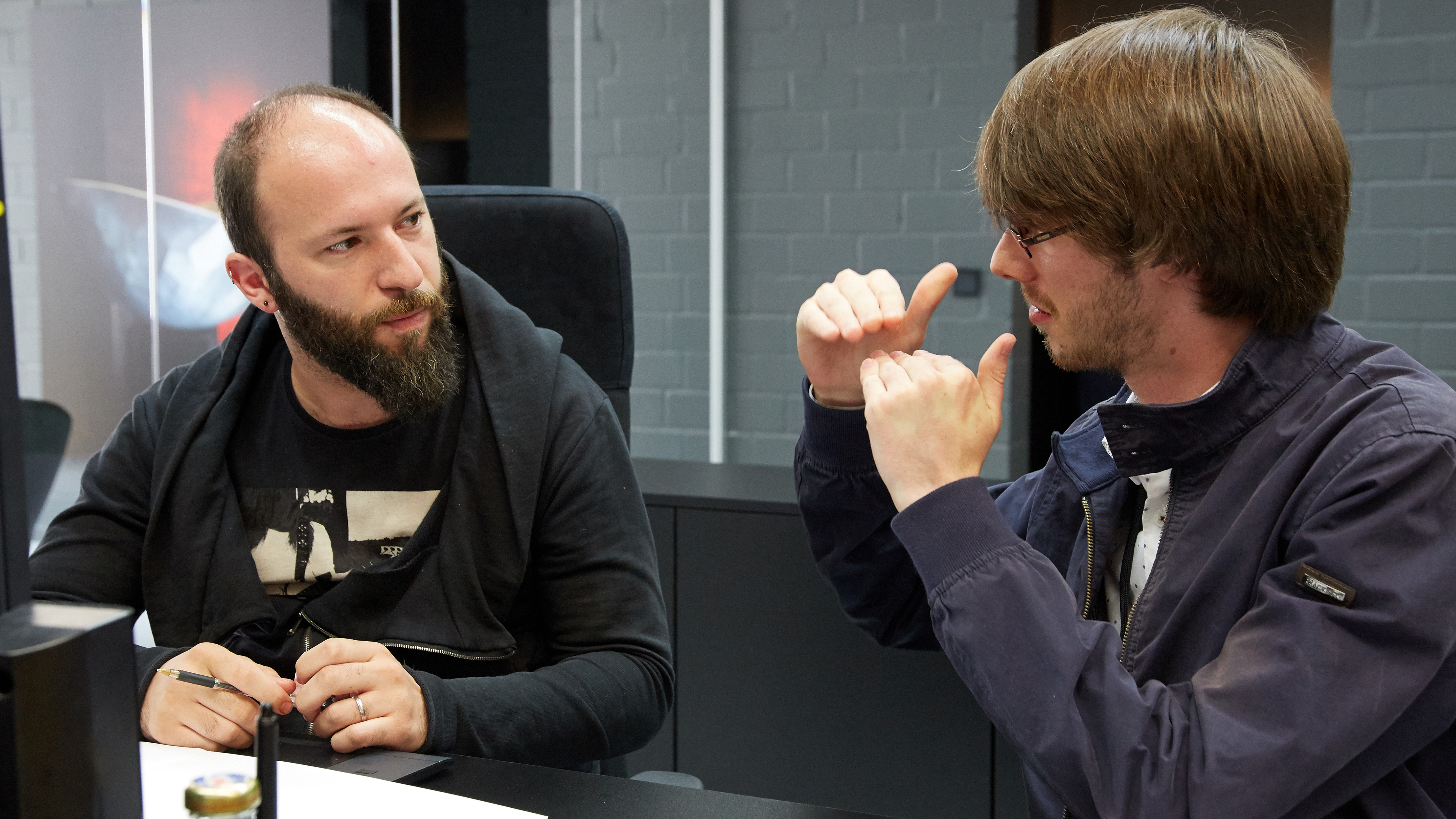
Top Gear designs a hypercar!
Mazda helps TG design a mid-engined, rotary hypercar. Because speed
Before discovering I could make a living from larking about in other people’s cars, I quite fancied becoming a designer. But I’d never have made it. Don’t have the patience (or skill). “There are some people who start straight away, and learn on the job” I’m told by Filip Boshevski, one of Mazda’s senior designers. “If you go to school, it’s hard work. I did four years of college, then one more year of masters in Italy.” Yikes.
We’re at Mazda’s European design HQ near Frankfurt, where its European Design Director Kevin Rice has invited us to come learn a bit about his company’s design ‘philosophy’ (don’t call it a design ‘language’. Kevin wouldn’t be happy) and best of all, design our own car. Filip is ours for the day, and together we’re going to condense a process that would usually take months into about five hours.
Words: Tom Harrison
I’d love to say that, when Mazda’s invite arrived in my inbox, my colleagues and I debated long and hard about what car we should ask Mr Rice and his team to help us design. But I can’t, because it would be a lie and we don’t do those. So the concept is thus: a mid-engined, rotary hypercar that wouldn’t look out of place alongside a P1, 918, LaFerrari or Aston Valkyrie (cliché, us?). In my head it sounds a bit like a 787B. Might even be a hybrid, I haven’t decided yet, and nor will I ever have to, such is the beauty of this exercise. But because we’re at Mazda, our creation would have to be one thing above all others: Kodo.

Kodo means “soul of motion” and, like all design concepts, it’s hard to define. It’s also hard to write or talk about without sounding like a bit of a wally, so here goes. Mazda says that in essence, Kodo means “to embody the dynamic beauty of life”. Kevin says it’s about that anticipatory feeling – a cheetah as it’s about to pounce, not one already in full flow. “You’re going deep inside to understand what the cheetah’s thinking about as it’s about to pounce,” he says. “Those are the kind of emotions we use as design tools.”
There are two central tenants to Kodo – “rin” (“a pure, refined presence”) and “en” (“the sensuality of a living creature”).
Cue Kevin: “We’re inspired by the pure, simple Japanese aesthetics, which you see in traditional paintings from centuries ago,” he says. “You have one or two lines with dots of colour and this amazing motional, sexual almost, representation that at the time was considered shocking, but was a technique of using the minimum amount of elements to create the biggest emotion. Too much visual confusion gets in the way of beauty. For us, simplicity and purity is the way forwards.” This is rin. Possibly.
And en? Look at its last concept. “The RX Vision is probably the most sensual car we’ll show. In some views the bodyside looks flat. As a clay model it looks awful – you can’t see anything on it, it’s completely flat. But when your angle changes, you get these reflections. And they all move as you move. So there’s this magic effect – one moment you have nothing, the next you have all this swirling, sensual sexuality in the bodywork.”
Kevin also says Mazda does things differently to other carmakers. First, it’s not the designers that start the creative process, but the modellers, who come up with these fantastical sculptures for the designers use as inspiration, and that throughout the design process the two- and three-dimensional teams work together much more closely than they do elsewhere.
I feel a bit guilty we’ve not asked for something a little more high-brow than a big, shouty hypercar, but that passes
Then there’s the whole language/philosophy thing – Kevin insists Kodo is the latter because while Mazda has “consolidated continuity”, it doesn’t have “fixed design features”. Kevin says there are “certain things we’d like to keep, and that’s the shape of the grille that gives us a family face. But even there we’re flexible enough to say where necessary, we might not stick to the same shape of grille as some of our other cars if we feel it doesn’t fit the soul of this particular car”.
Lessons well and truly learnt, and thoughts of massive wings and dramatic, edgy, non-Kodo bodywork expelled from my tiny mind, Filip and I sit down and start sketching. Refined, sculptural and exciting (but not complicated exciting) is the aim. Filip’s more used to designing family crossovers than he is cutting-edge hypercars, so this is as much of a challenge for him as it is for us. He’s not allowed to tell me what he’s working on at the moment or what he worked on last (I suspect it’s whatever’s behind the set of conspicuously taped-up windows that line one of the studio’s walls), but he does reveal he played a pretty big part in the design of the Koeru. A bloody good-looking thing, by all accounts. I am thusly satisfied we are in Very Good Hands. He also has a fantastic beard.
We begin with profiles, and quickly settle on one. For the next hour or so we refine. Once Filip has a basic silhouette he and I agree on, he tears it out of his notebook and uses it as a template, tracing its basic outline over and over again, each time subtly changing various aspects to see what works and what doesn’t. Meanwhile Kevin is pacing. We’re not the only ones here today, so he’s pottering around giving feedback. Designers, especially ones at Kevin’s level, can be spikey. Not Mr Rice, he’s a disarmingly nice Brit with a penchant for floral shirts. I feel a bit guilty we’ve not asked for something a little more high-brow than a big, shouty hypercar, but that passes once he reaches us and starts gushing about how fantastic it looks.
“It’s hell dramatic, no?” Indeed. We talk aero. Kodo and wings, foils and vanes don’t gel, so an Aston Valkyrie-esque setup, where the heavy-lifting is done by the underbody rather than a gamut of aerofoils, is plainly the way forwards. Kevin suggests we reprofile the rear-end (so the air exists higher and thus has further to go, meaning more downforce) and tweak the wings that house the front wheels so they’re not so triangular. Triangles are bad, apparently. Filip goes back to work, making Kevin’s amends, while I go away and have a go at clay modelling (harder than it looks, FYI). By this point we’ve scanned the design into Filip’s computer, where edits are quicker and easier to make.
Top Gear
Newsletter
Thank you for subscribing to our newsletter. Look out for your regular round-up of news, reviews and offers in your inbox.
Get all the latest news, reviews and exclusives, direct to your inbox.
It goes on. Me observing, Filip shading and adding detail where required. We borrow a set of wheels from the RX Vision Concept (below). They have Mazda badges on, but our car isn’t one. The point of this exercise isn’t to design a Mazda, the PRs tell us, but to truly understand the Kodo way of thinking. Would make a good one though, wouldn’t it? RX-1, maybe.
As car design is effectively one big competition – in Mazda's case between studios here in Frankfurt, LA and Japan – when the deadline’s up we’re made to present our creations as a proper designer would. Kevin delivers the final verdict. “As a hypercar, you’d expect lots of spoilers and stuff, and you don’t get that, it’s much cleaner. Kodo has to adapt its purity and simplicity to whichever car category you’re looking at. And I think this really is a spectacular hypercar, Kodo design.”
If you see it at Geneva in two years’ time, you know who to thank. Me.
Trending this week
- Car Review
BMW 1 Series











